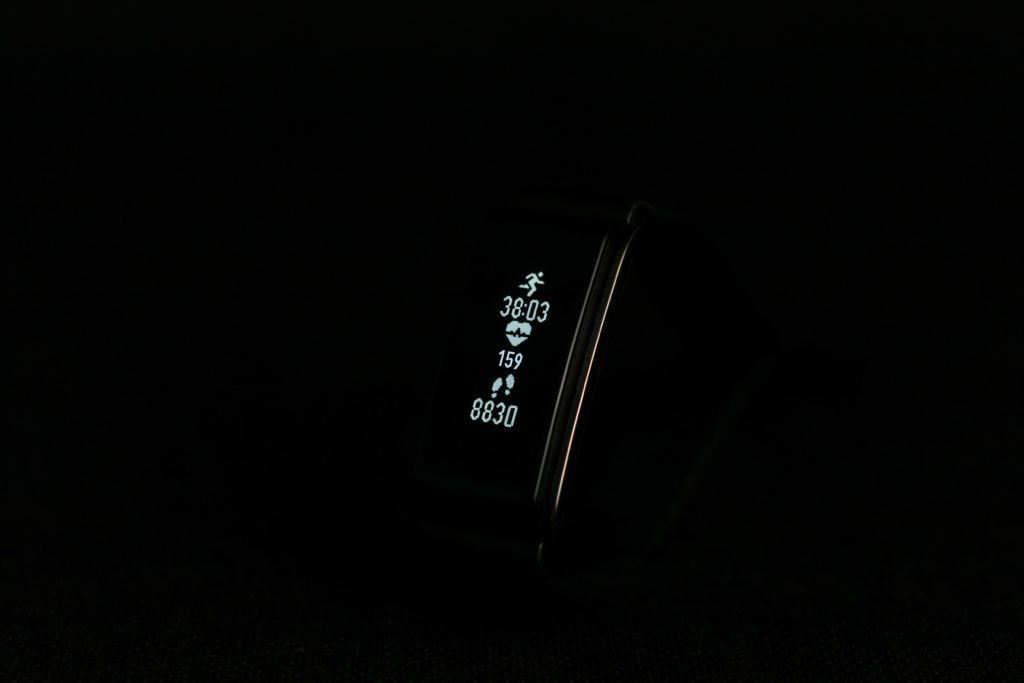Did you know that in 2019, 2.71 billion people owned smartphones?1
That almost outnumbered the amount of Americans who own personal computers!2 As Jimmy Fallon said, “One hundred percent of smartphones say they own an American.” And his quote is as accurate as it is humorous.
Times have certainly changed from the days of rotary phones, landlines, and choosing between using the internet and the phone. Now we find the world at our fingertips. A single tap of a finger can tell me all I need to know about the weather for the next seven days, who won the latest football game, what is trending on Twitter, and what my best friend had for lunch — at least if they are an Instagram foodie.
But that’s not to say that these developments have been all negative or contribute to random trivialities of our lives. We now have the world of health care coming together with the world of cyberspace and apps, and that trend is using applications and smartphones for health-related goals. From calorie counters, fasting trackers, to online video visits with physicians and apps to complete the boatload of paperwork that goes with visiting any physician.
From 2012 to 2015 to… Infinity and Beyond
It’s no surprise the field of health science technologies is taking the world of apps by storm in recent years as they add a previously unprecedented ability to maximize real–time interventions and highly interactive patient contact. A study from Kratzke et al. published in the International Electronic Journal of Health Education from 2012 analyzed the potential of utilizing health apps and smartphones for health interventions. (This is a fancy way of saying they looked at the viability of using apps to improve the health of patients.) What they found was that health services benefit exponentially from the smartphone app platform.3. They also suggest the patients that would otherwise forgo trips to the doctor are more likely to be able to be reached through their devices than ever before. The group also touched on the fact that (at least in 2012) many health apps left a lot to be desired, such as wonky, slow navigation, boring design, and a variety of functionality issues.4
Fast forward a couple of short years of incredibly rapid tech development, and a lot of those wishes start to become a reality, leading us to yet another health application revolution. In 2015, a study by Payne et al. was published by JMIR Publications, a publication devoted to health innovations and presenting those innovations to audiences across the globe. This study focused heavily on the functionality of apps in 2015 by doing an in-depth systematic review of the current available studies ((Payne HE, Lister C, West JH, Bernhardt JM Behavioral Functionality of Mobile Apps in Health Interventions: A Systematic Review of the Literature JMIR Mhealth Uhealth 2015;3(1):e20 URL: https://mhealth.jmir.org/2015/1/e20 DOI: 10.2196/mhealth.3335)). The findings from the study were that a majority of the studied apps were adequate in terms of functionality and effective at encouraging behavior changes in the groups who used them. At the time of publication, the researchers suggested that the potential for health apps was largely scalable and surprisingly untapped. So, let’s fast forward again — to a time where that potential had started to bloom.
As of 2019, there are 47,878 different health apps available on iOS5. So how are you supposed to know which ones are effective and able to protect your personal health information adequately? You could always discuss the variety of apps with your primary care physician as it is becoming more common for primary care physicians to recommend apps to patients, particularly those that aid in monitoring and self-management needed for a variety of conditions.6 However, if you aren’t looking forward to the prospect of visiting your primary care for app advice, you could also do your due diligence on researching each app thoroughly before downloading and/or accepting those terms and conditions. It is essential to be sure you are downloading an app that is regulated, self-certified by a reputable app developer, or that came directly off an authorized medical app store .6

If you read the words “authorized medical app store” and had to do a double–take, don’t worry- you aren’t alone. But yes, those do exist. There is an online Health Apps Library that is run by the National Health Service in England focused on vetting medical apps, so you don’t accidentally commit your personal health information to a group that isn’t dedicated to protecting it.7 The good news is that as the health care app revolution gains more momentum, it becomes easier to locate information on each app and the developer that created it. It is also important to select apps that agree to abide by HIPAA regulations if you’re based in the United States because they are held to the highest standards for protecting your health data, exactly like your physicians’ offices.
No Really, There is an App for That
We’ve taken the time to “travel in time” to the start of the health app revolution and back to the pinnacle of the movement, and delved into the absolute necessity of protecting your health information from apps that don’t take enough care. Now, let’s talk about the experience of using a health app and why you will probably be downloading one shortly if you haven’t already.
A major selling point for a lot of current health apps is this exact process known as gamification. Gamification can be defined as taking game-like elements or designs and implementing them in non-game context.8 This strategy has become incredibly popular for all types of apps, such as financial apps and social media, and health apps have also followed suit.
In 2016, gamification was on track to become a 2.8 billion dollar industry.9 If you think about all the uses from a scientific and health perspective, this makes perfect sense because what better way to encourage behavior modification than a method that rewards users for doing well? It’s no surprise that apps that focus heavily on gamification to change practices or encourage growth do so well — take Duolingo, for example. The first thing advertised on their web page is “Gamification poured into every lesson” and with good reason. Learning languages can seem impossible, especially for adults that have never been exposed to other languages via pure immersion. Still, when it becomes a game, it can encourage learning without feeling like learning. Their page also boasts that the app currently has more than 300 million users. Now, can an app developer take that same gamification process and pivot it for improving health outcomes?

Of course, health apps can capitalize on the gamification game. Take, for example, the LIFE Extend mobile app by LifeOmic. If you take a look at the graphic from LifeOmic’s web page, you’ll notice a few things immediately. First, there are “LifePoints” that not only encapsulate the gamification of health but also, second, a section that adds a competitive or cooperative, social element to this game. The app features articles for learning and a social feed that gives insight into other “players” experiences.
Further, LifeOmic’s system allows for learning about and joining clinical studies if you elect to use it for that purpose. They also tote that your information is secure, like we talked about earlier, using the same technologies as physician offices.
There is still a lot of room for research about gamification, health apps, and precision medicine. Currently, the Indiana University (IU) School of Medicine in Indianapolis is working on focusing on these exact questions along with precision health interventions in general. Even better, IU is not the only institute currently working on these health questions and precision health, so we can expect to see more of this in the future.
In the meantime, we should keep on playing our health games as long as they are backed by safe security measures and some semblance of research that proves that they are helping us to change our overall health. So pick up the phone, earn points, and take part in the new health app revolution!
- COVID-19 & Implications for Behavioral Health Providers in Unprecedented Times - September 15, 2020
- There’s an App for That: A Look at the Science Behind Health Apps - May 5, 2020
- Thank You for Liking, Commenting, Subscribing - September 10, 2019
- https://leftronic.com/smartphone-usage-statistics/ [↩]
- Kratzke, C., & Cox, C. (2012). Smartphone technology and apps: Rapidly changing health promotion. Global Journal of Health Education and Promotion, 15(1) Retrieved from http://ulib.iupui.edu/cgi-bin/proxy.pl?url=http://search.proquest.com/docview/1730212527?accountid=7398 [↩]
- Kratzke, C., & Cox, C. (2012). Smartphone technology and apps: Rapidly changing health promotion. Global Journal of Health Education and Promotion, 15(1) Retrieved from http://ulib.iupui.edu/cgi-bin/proxy.pl?url=http://search.proquest.com/docview/1730212527?accountid=7398 [↩]
- Kratzke, C., & Cox, C. (2012). Smartphone technology and apps: Rapidly changing health promotion. Global Journal of Health Education and Promotion, 15(1) Retrieved from http://ulib.iupui.edu/cgi-bin/proxy.pl?url=http://search.proquest.com/docview/1730212527?accountid=7398 [↩]
- Appfigures. (August 6, 2019). Number of mHealth apps available in the Apple App Store from 1st quarter 2015 to 2nd quarter 2019 [Graph]. In Statista. Retrieved September 27, 2019, from https://www.statista.com/statistics/779910/health-apps-available-ios-worldwide/ [↩]
- Huckvale K, Morrison C, Ouyang J, Ghaghda A, Car J. The evolution of mobile apps for asthma: an updated systematic assessment of content and tools. BMC Med. 2015;13:58. Published 2015 Mar 23. doi:10.1186/s12916-015-0303-x [↩] [↩]
- Boulos, M. N., Brewer, A. C., Karimkhani, C., Buller, D. B., & Dellavalle, R. P. (2014). Mobile medical and health apps: state of the art, concerns, regulatory control, and certification. Online journal of public health informatics, 5(3), 229. doi:10.5210/ojphi.v5i3.4814 [↩]
- Lister C, West JH, Cannon B, Sax T, Brodegard D. Just a Fad? Gamification in Health and Fitness Apps JMIR Serious Games 2014;2(2):e9 URL: https://games.jmir.org/2014/2/e9 DOI: 10.2196/games.3413 [↩]
- Lister C, West JH, Cannon B, Sax T, Brodegard D. Just a Fad? Gamification in Health and Fitness Apps JMIR Serious Games 2014;2(2):e9 URL: https://games.jmir.org/2014/2/e9 DOI: 10.2196/games.3413 [↩]





Pingback: Intervene Upstream Issue 3 - Underlying: Reflections on Condition » Intervene Upstream, the online peer-reviewed public health publication for graduate students